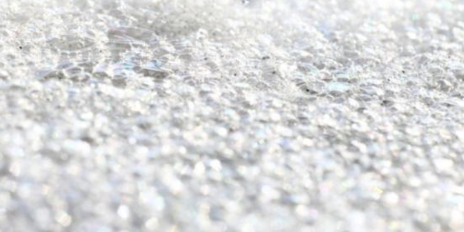What is the role of the surfactants’ dual action in destabilizing foam bubbles?
The Twin Impact: Dual Role of Surfactants in Destabilizing Foam Bubbles
The secret behind the efficiency of surfactants in suppressing foam lies in their dual nature. This duality, embodied in their hydrophilic and hydrophobic parts, enables surfactants to disrupt the equilibrium within foam bubbles, leading to their eventual collapse.
The Twin Forces of Surfactants
The combination of surfactants’ hydrophilic (water-attracting) and hydrophobic (water-repelling) properties causes an impactful disturbance in the foam structure. Here’s how the dual action of surfactants plays a role in destabilizing foam bubbles:
The Hydrophilic Front: Bridging with Water
Due to their ability to mix with or attract water, the hydrophilic heads of surfactant molecules form a bridge with the water phase of the foam bubble’s surface layer. This bridge ensures the secure positioning of surfactant molecules on the water-air interface of the foam bubble.
The Hydrophobic Back: Repelling Water
The hydrophobic tails of the surfactant molecules, being water-repelling, point towards the air in foam bubbles. The repulsive force created by the hydrophobic tails against the water phase causes the defensive layer to stretch and become thinner, resulting in an destabilized state.
Destabilizing Force: Unleashing Disruption
As the hydrophobic tails push against the layer’s walls and the hydrophilic heads pull the liquid in the layer simultaneously, a destabilizing force is released that contributes to high tension within the foam bubble. Once the tension surpasses the bubble’s sustaining capacity, the bubble collapses.
FAQs
-
What is the role of the hydrophilic property of surfactants in disrupting foam bubbles?
- The hydrophilic heads of surfactant molecules interact with the water phase of the foam bubble’s surface layer. This interaction stabilizes the surfactant molecules on the water-air interface, thus proving instrumental in disrupting the bubble.
-
How does the hydrophobic property of surfactants contribute to the destabilization?
- The hydrophobic tails of the surfactant molecules push against the bubble’s walls. This repulsive force causes the defensive layer of the foam bubble to stretch and become thin, destabilizing the bubble.
-
How does the dual action of surfactants lead to the collapse of foam bubbles?
- The hydrophilic heads pull the liquid in the defensive layer and the hydrophobic tails push against it, creating high tension. When this tension surpasses the bubble’s sustaining capacity, it leads to the bubble’s collapse.







